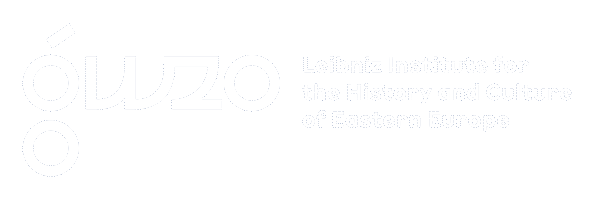Vernacular Landscapes in an Industrial Town at the End of the Western World
by Saara Mildeberg
The industrial history of Narva in Northeast Estonia is mostly associated with the textile giant Kreenholm (1857-2010) or the secret Soviet military complex Baltijets (1947-1993), but energy production, which continues to shape the whole region of Ida-Virumaa, is less discussed. Maybe because the industry is still ongoing? Maybe because its future is heavily negotiated, both in terms of the environmental hazards and the geopolitical safety of producing energy from oil shale?
On February 8, 2025, Baltic countries decoupled itself from the Russian energy grid, and joined the continental European frequency area on February 9. The constant buzzing of the pylons that connect Estonia and Russia mid-air fell quiet, but for now, the silent structures still tower over the Narva Reservoir, as witnesses of the end of an era. On the Estonian side, they carry their power lines above the Veekulgu district — a cluster of boat garages and dachas with its history surprisingly closely intertwined with that of energy production in Narva.

Figure 1: Map of the Kulgu waterscapes in relation to the power plants.
Having the experience of organising a couple of socially engaging events elsewhere in the region, this summer, I was offered the coordinator position by the Narva Art Residency for their summer residency project "Narva Venice Embassy" which aims to bring together Russian-speaking locals, domestic, mostly Estonian-speaking tourists from elsewhere in Estonia, and international artists through joint activities and art projects. Jumping head first into the project, I was curious to learn about the history of the area, and the viability of a seasonal community-oriented artist-residency. I remain sceptical about the latter, but let us first delve into the origin story of (Vee)Kulgu as we know it.
The Kulgu harbour was already known during the Russian Empire as a boat docking area and transport hub for wood and textile, but the contemporary landscape was created in mid-1950s, when the Narva Reservoir was established. The Reservoir, which provides water to the Narva Hydroelectric Plant and cooling water to the Narva Power Plants, didn't just swallow land, but gave birth to new waterways, which were appreciated by the local fishermen. On 13.05.1969, by a decree by Executive Committee of the Narva City Council of People's Deputies which allocated land for the establishment of new boat garages, the Kulgu Boat Garage Association was created. Over time, the spontaneously built sheds and boat bridges developed into garages and personal harbours. During its prime time, there were up to 1140 berth and garage boxes with about 2000 fishermen, and each weekend would mean hundreds of boats heading to the reservoir. The collapse of the Soviet Union and the following mayhem meant difficult times for Kulgu as well. Garages were subject to break-ins, vandalism, and stealing; on the background, the Reservoir had become a heavily regulated transboundary water body. As a result of land reforms, in the 2000s people were able to privatise and become the rightful owners of the land beneath their garages, and over time, the original function of the area shifted from providing extra food in times of Soviet scarcity to leisure and escape from the busy city life. Today, the Kulgu Boat Garage Association has about 547 active members, with friends and relatives visiting often. Depending on the person, this may mean active do-it-yourself practices like gardening, building, maintenance and repair, or recreation like barbeque parties, sauna and sunbathing — all together forming a web of skills, knowledge, and connections, materialised in vernacular architecture.

Figure 2: "Private property. It is allowed to be in the private property with the permission of the owner. Territory is guarded."

Figure 3: View on a well-equipped dacha garden from one of the canals.

Figure 4: A woman sunbathing on a sunny July Saturday in Kulgu.
Many of the gardening or garage associations around bigger towns in Estonia have been destroyed to make way for new development. In the recent years, the forms and contents —eclectic designs and creative users— of dachas and garages from the socialist era have been gaining more and more attention as a sociocultural phenomenon worth if not preserving, then at least observing and documenting. In the German context, one doesn't have to look far for an example: the "3000 garages" project of Chemnitz, European Cultural Capital of 2025. In Narva, the initiators of such attention have been the Narva Art Residency with the "Narva Venice Embassy" residency since 2022, and Station Narva urban and music festival, which has included guided tours to the "Narva Venice" in its programme since 2024. On the one hand, in a place where people come to rest, relax, and party, creative and engaging approaches have more potential to bring people together than journalistic scandals around land ownership, vernacular architecture built without permission, drunken fights and illegal fishing. On the other hand, outside attention has a high risk of directly countering the locals' idea of their summer escapade.
And not only that. To avoid highlighting single artists, one has to admit that at the end of the day, there is no fixed recipe for a socially engaged, community-oriented art project. Especially, if there is a lack of the essential element of engagement —time— on location, with the people. Each artist comes with a different background, their method of choice, and personal characteristics, which all influence their ability to reach the local people. But to turn the gaze away from the artist-local dichotomy and make generalisations based on the experience: whenever someone mentions “community”, one should be careful — take it with a grain of salt. This summer has taught me that the idea of a coherent "Kulgu community" dwelling around the canals of the so-called Narva Venice should not only be taken with a grain of salt, but it's a whole cocktail on its own. A Bloody Mary: a grain of salt, as it is mainly a legal community, bounded by the Boat Garage Association, yes; but things get spicy when you discover the private lives of the mavericks both behind the garage doors and out in the open. Someone has built a two-storey villa for themselves without a construction permit. Someone is fishing illegally. Someone has built an altar for Stalin, because "he was a good guy". Only the pregnant can escape the shot of vodka he offers. Juice flows from the tomato vines that the elderly women who have raised up their kids are nourishing now instead in their gardens and greenhouses. A passing cyclist offers a plastic bag filled with apples from his garden: "ем!" This is not a spectacle for an outsider's pleasure, but an invitation to join. Only by biting the apple that is offered, one can discover who is included in the community, who is excluded; what unites the members and distinguishes them from the others, and who benefits from this setting. Paradoxically, it seems, that to engage with communities means to deconstruct them.

Figure 5: A conversation between my colleague and a woman that is standing knee-deep in the Reservoir water.
"You're not allowed to swim in the transboundary reservoir."
- "Humans are not allowed, but it's my dog who's swimming."
1 The events me and two other researchers initiated in Sillamäe in 2022 and 2023 are documented and discussed in a recently published paper: Pungas, Lilian; Mildeberg, Saara; Samuel, Annela (2025). Building bridges between urban food activism and quiet Food Self-Provisioning practices: lessons from transdisciplinary participatory action research interventions in Eastern Estonia. Environmental Sociology, 1−14. DOI: 10.1080/23251042.2025.2518946.
2 "Narva Venice Embassy" project website: https://www.nart.ee/en/projects/narva-venice/
3 For a more thorough historical overview of the area, read the Late Night Kulgu newspaper: https://www.nart.ee/en/late-night-kulgu/
4 See "Soodevahe museum" (2011–2014), Timo Toots's travelling exhibition that documented the place-based art project "Linnujaam" (https://www.timo.ee/soodevahe/) held in the Soodevahe shanty town next to Tallinn Airport; Aljona Surzhikova's "Not My Land" (2013; https://www.efis.ee/en/film/16383) about the inhabitants of the Suur-Sõjamäe shanty town; Maria Kilk's "Shanghai, the last plane" (2017; https://ajakirimaja.ee/maria-kilk-fotoseeria-tartu-hiinalinna-aedadest/) and Kerly Ilves "Recycling. Chinatown" about the Jaamamõisa district in Tartu (2014—…, https://www.balther.net/kerly-ilves-photo-exhibition-opened-tartu-train-station/). Maria Kilk's photo series is also featured in the permanent exhibition the Tartu City Museum as a representation of the Jaamamõisa district.







